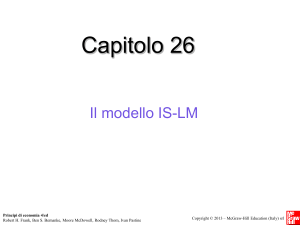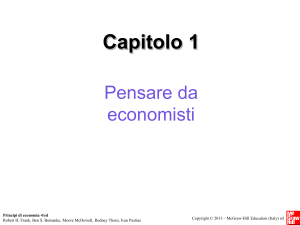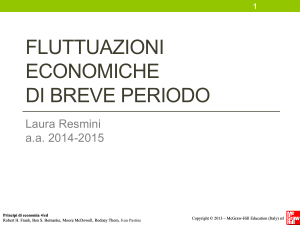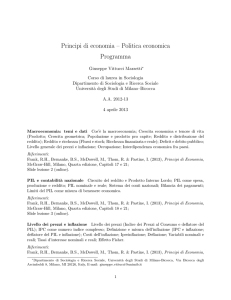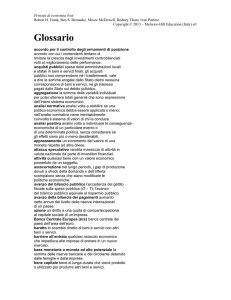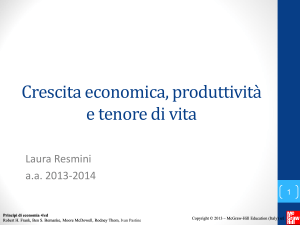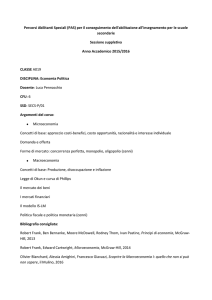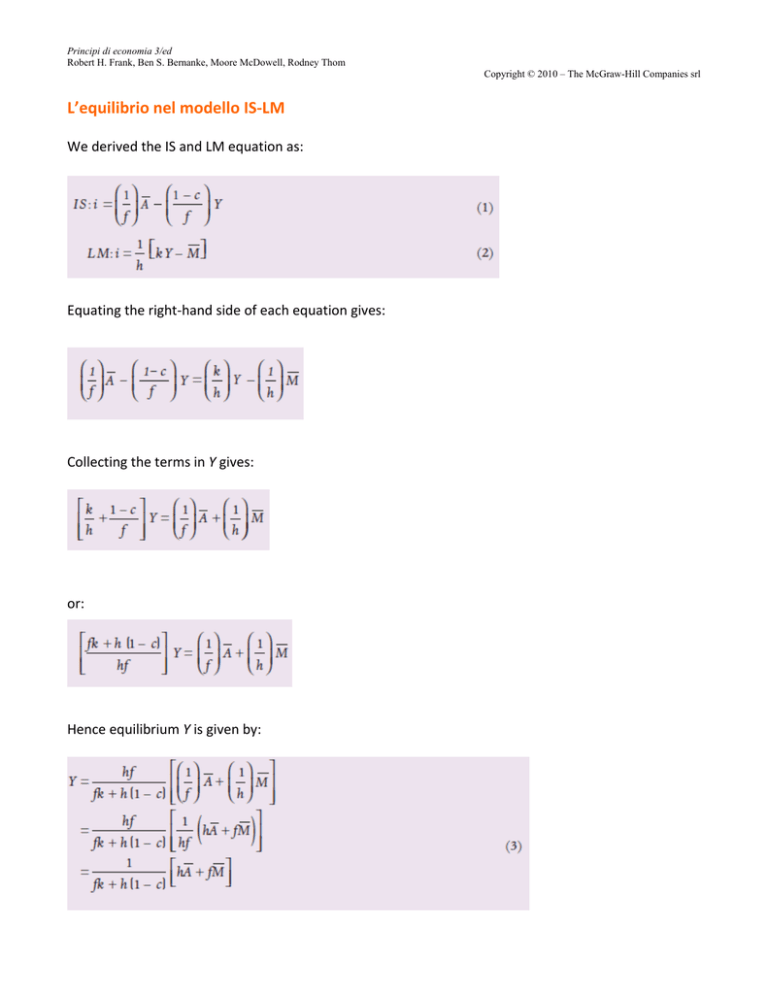
Principi di economia 3/ed
Robert H. Frank, Ben S. Bernanke, Moore McDowell, Rodney Thom
Copyright © 2010 – The McGraw-Hill Companies srl
L’equilibrio nel modello IS‐LM We derived the IS and LM equation as: Equating the right‐hand side of each equation gives: Collecting the terms in Y gives: or: Hence equilibrium Y is given by: Principi di economia 3/ed
Robert H. Frank, Ben S. Bernanke, Moore McDowell, Rodney Thom
Copyright © 2010 – The McGraw-Hill Companies srl
and given the value for Y from Equation (3) the equilibrium value for i can be determined from the LM Equation (2). Example Equilibrium in the IS‐LM model Suppose that, in a given economy, A– = 1,010, M = 910, c = 0.8, f = 1,000, h = 1,000 and k = 0.2. Use the IS‐LM model to find the equilibrium values for Y and i. Using Equation (3) in Box 23.3 we get: Substituting the equilibrium value for Y into the LM equation gives the equilibrium rate of interest: Hence in equilibrium i = 0.05 and Y = 4,800. For example, in Figure 23.5, point E corresponds to an (i, Y) combination (0.05, 4,800). Principi di economia 3/ed
Robert H. Frank, Ben S. Bernanke, Moore McDowell, Rodney Thom
Copyright © 2010 – The McGraw-Hill Companies srl



